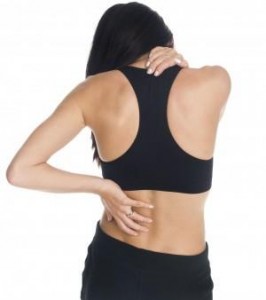
More evidence that low-calorie sweeteners are bad for your health
Studies show that artificial sweeteners can raise the risk of hypertension, metabolic syndrome, type 2 diabetes and heart disease, including stroke.

Finding the motivation to exercise can be hard enough if you are generally healthy. Imagine how hard it is when you suffer from chronic pain.
And yet there are really good reasons to find the will to get moving if you suffer from chronic pain – the main one being that it may help increase your tolerance to that pain.
In addition to reducing pain, stiffness, and inflammation, studies shows that regular aerobic exercise (like a daily walk or quick stint on the elliptical) could actually turn down the volume of your discomfort by increasing your pain tolerance.
For instance, according to a new study by scientists at the University of New South Wales and Neuroscience Research Australia, regular moderate- to vigorous-intensity aerobic exercise can increase pain tolerance effectively enough to help you push yourself a little bit further in your workouts.
According to lead researcher Matthew Jones, researcher at the University of New South Wales “the results remind us that the longer we stick with an exercise program, the less physically discomfiting it will feel, even if we increase our efforts … The brain begins to accept that we are tougher than it had thought, and it allows us to continue longer, although the pain itself has not lessened.”
The Australian study measured pain tolerance in a group of young, healthy volunteers who didn’t exercise regularly but expressed an interest in doing so. It looked at two specific types: ischaemic pain – a burning pain you feel when your muscles aren’t getting enough oxygen (similar to the pain caused by peripheral arterial disease) – and pressure pain – like you might feel when there’s too much pressure applied to a muscle during a massage.
After six weeks of cycling for 30 minutes three times a week, participants’ tolerance for ischaemic pain was significantly increased
Although it was not so evident in this study past research has shown that aerobic exercise can increase tolerance to pressure pain. That means that regular activity can help that painful knee of back to hurt less.
What the research says
Other studies have also shown that pain tolerance can be improved by exercise. In 2012 University of Heidelberg researchers reviewed 15 studies that compared experimentally induced pain threshold or tolerance in athletes and moderately active people. They analysed experiments that included adult men and women; tested 568 athletes and 331 normally active control participants; and involved endurance sports, game sports, and strength sports.
Though levels varied from individuals to individual, the results showed that overall athletes can endure more pain than moderately active people. Many “game” sport athletes showed a higher pain tolerance than endurance athletes, although this varied by type of sport. Other reviews have also found that those engaging in contact sports have a higher tolerance for pain. Other evidence suggests male athletes tolerate pain better than women, though women’s pain perception may be linked to their monthly cycle. At times when estrogen levels are high (during premenstrual and menstrual phases), women may be more sensitive to pain than at other times.
It’s also possible exercise or pain – or both – rewires your brain in some way causing us to respond to pain in ways we might not otherwise try. For instance when trying to run a little farther or stretch a little higher, or when pain makes a daily task more difficult, you may hear people swearing under their breath. Swearing, it turns out, has an analgesic effect that helps us push past pain.
Individual reactions to pain
We really don’t know why some people handle pain better. It could be genetic; in 2010 researchers found people who carry a specific genetic variant are more likely to report higher levels of pain. There’s even evidence that redheads have a lower threshold for pain.
But as human beings we are more than our genetic inheritance.
Some researchers suggest that resistance to pain can be learned over time. Following an exercise programme that gradually increase in intensity can lead to the release of hormones called endorphins which make us feel better but also have a pain relieving function.
And here’s something else to think about. Other people’s reaction to our pain is also influential. In one 2012 study, researchers found that doctor-patient relationship built on trust and empathy doesn’t just put patients at ease – it actually changes the brain’s response to stress and increases pain tolerance. A good reminder that pain is not just physical.
Just get started
If you want to exercise but have chronic pain, try starting small and building up gradually. Pick activities that you like whether it’s dancing, yoga or joining a Pilates class or a group that walks around your local park. Low impact exercise like swimming can be a very good all rounder so why not join an aqua aerobics class? Likewise to calm and focus the mind and keep the body nimble tai chi can be very helpful.
Vary your routine so that you do different things on different days. A little every day will help you stay limber and release the endorphins that will motivate you to do more. Even if it is challenging at first stick with it.
You will soon find that you can do more and more and redefine what you think you are capable of and what your body can and can’t do in a more positive way.

Please subscribe me to your newsletter mailing list. I have read the
privacy statement